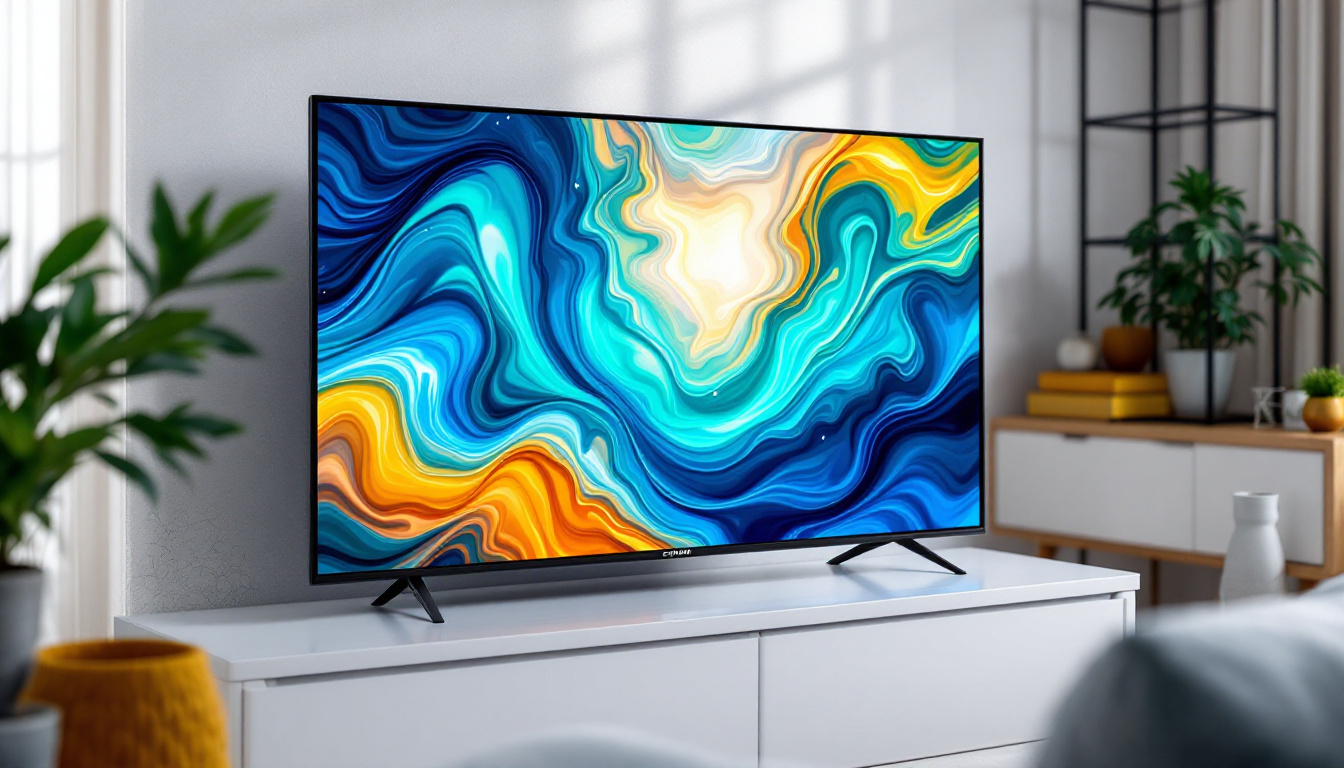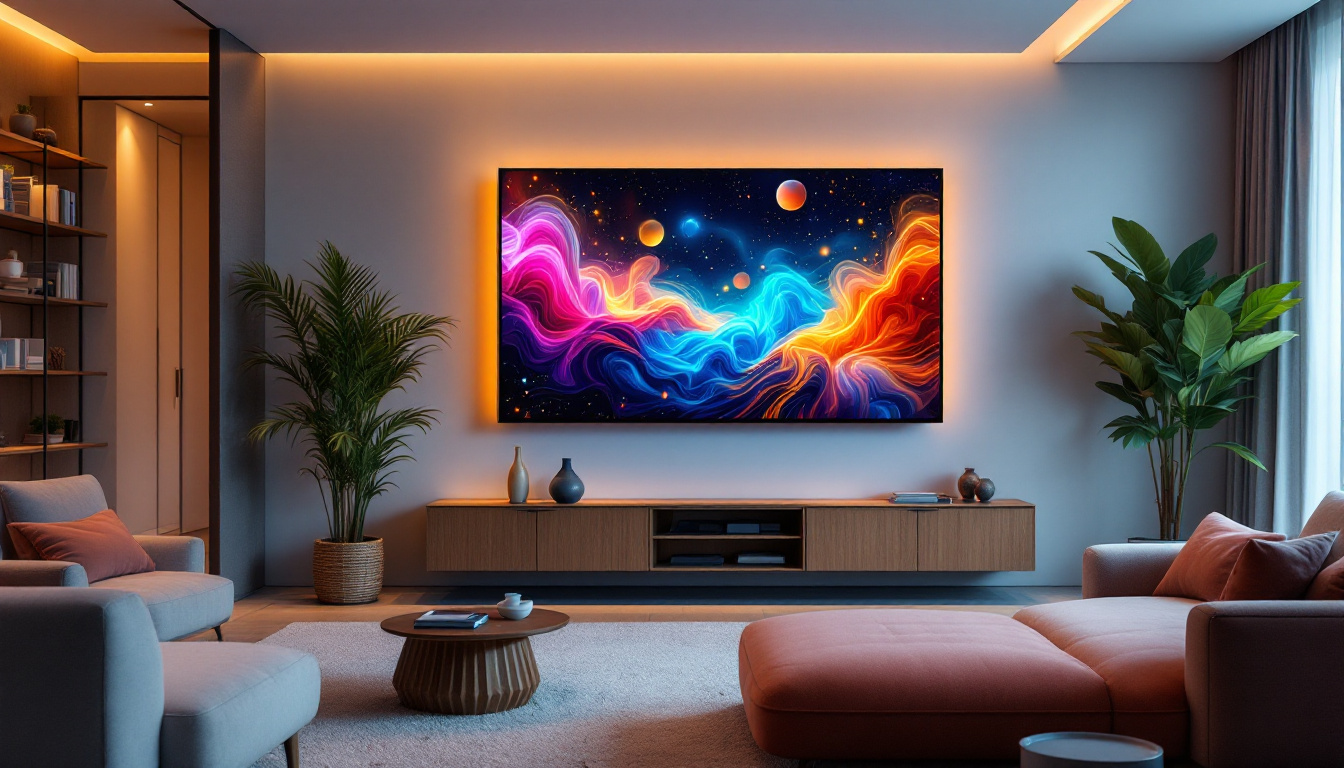First LCD TV: LED Display Explained
The evolution of television technology has been remarkable, with each advancement bringing new features and improvements in picture quality. Among these innovations, the introduction of LCD (Liquid Crystal Display) TVs marked a significant milestone. This article delves into the history of LCD TVs, the transition to LED displays, and how these technologies have shaped the viewing experience we enjoy today.
The Birth of LCD Technology
LCD technology emerged in the late 20th century, revolutionizing the way images were displayed on screens. Initially, LCDs were utilized in smaller devices like calculators and watches before making their way into the television market. The first LCD TVs were introduced in the early 2000s, offering a sleek design and improved energy efficiency compared to traditional CRT (Cathode Ray Tube) televisions. This transition marked a significant shift in consumer electronics, paving the way for a new era of digital displays that would eventually dominate the market.
As LCD technology continued to evolve, manufacturers began to explore various enhancements, such as improving response times and increasing resolution. The introduction of high-definition LCDs further transformed the viewing experience, allowing for sharper images and more detailed visuals. This advancement not only captivated consumers but also set new standards for content creators and broadcasters, who began producing high-definition content to meet the growing demand.
How LCD Works
At its core, an LCD screen operates by manipulating light through liquid crystals. These crystals are sandwiched between two layers of glass and are controlled by electric currents. When the current passes through, the crystals align in a way that allows varying amounts of light to pass through, creating images on the screen. This technology allows for thinner and lighter displays, making it ideal for modern television designs. The backlighting system, often using LED technology, further enhances the brightness and contrast of the images, allowing for a more immersive viewing experience.
In addition to the basic functioning of LCDs, advancements in technology have led to the development of various types of LCD displays, such as IPS (In-Plane Switching) and TN (Twisted Nematic) panels. IPS panels are known for their superior color accuracy and wider viewing angles, making them a popular choice for professional graphic work and high-end televisions. On the other hand, TN panels are often favored for their faster response times, making them suitable for gaming applications. This diversity in LCD technology caters to a wide range of consumer preferences and needs.
Advantages of LCD TVs
One of the most significant advantages of LCD TVs is their ability to produce bright and vibrant colors. The technology allows for a wide color gamut, which enhances the viewing experience. Additionally, LCD screens are less prone to burn-in compared to plasma displays, making them more suitable for varied content consumption. This characteristic is particularly beneficial for users who frequently watch news channels or display static images, as it ensures that the screen maintains its quality over time.
Moreover, LCD TVs consume less power than their CRT counterparts, contributing to energy savings and a reduced environmental impact. Their lightweight design also facilitates easier installation and mounting, appealing to consumers looking for convenience. Beyond these practical benefits, LCD technology has also enabled innovations such as smart TVs, which integrate internet connectivity and streaming capabilities directly into the television. This convergence of technology has transformed the way audiences engage with media, allowing for seamless access to a plethora of content from various sources, all from the comfort of their living rooms.
The Transition to LED Displays
While LCD technology laid the groundwork for modern televisions, the introduction of LED (Light Emitting Diode) technology further enhanced the viewing experience. It is important to note that LED TVs are essentially LCD TVs that utilize LED backlighting instead of traditional fluorescent lights. This transition has led to significant improvements in picture quality, energy efficiency, and overall performance.
Understanding LED Backlighting
LED backlighting involves using LEDs to illuminate the LCD panel. This method offers several advantages over older backlighting technologies. For instance, LED backlighting can be implemented in two main ways: edge-lit and full-array. Edge-lit LEDs are placed along the edges of the screen, while full-array LEDs are distributed evenly behind the screen, allowing for better control over brightness and contrast.
This technology not only enhances brightness but also improves contrast ratios, making dark scenes appear deeper and more vivid. The result is a more immersive viewing experience, particularly in dimly lit environments.
Benefits of LED Displays
LED displays offer numerous benefits that contribute to their popularity among consumers. One of the most notable advantages is their energy efficiency. LED technology consumes significantly less power than traditional LCDs with fluorescent backlighting, which translates to lower electricity bills and a smaller carbon footprint.
Additionally, LED displays provide a longer lifespan compared to older technologies. With advancements in LED technology, manufacturers have been able to create screens that last longer without compromising picture quality. This longevity makes LED TVs a worthwhile investment for consumers looking for durability.
Comparing LCD and LED Technologies
When comparing LCD and LED technologies, it’s essential to consider various factors, including picture quality, energy consumption, and cost. While both technologies share a similar foundation, the differences in backlighting significantly impact performance.
Picture Quality
In terms of picture quality, LED displays generally outperform traditional LCDs. The ability to achieve higher brightness levels and enhanced contrast ratios makes LED TVs more suitable for a variety of viewing conditions. This is particularly important for consumers who enjoy watching movies or sports in brightly lit rooms.
Moreover, features such as local dimming, available in full-array LED models, allow for even greater control over contrast and brightness. This technology enables specific areas of the screen to dim or brighten independently, resulting in a more dynamic and lifelike image.
Energy Efficiency and Cost
Energy efficiency is another critical consideration when comparing these technologies. LED TVs consume less power, making them a more environmentally friendly option. This efficiency can lead to significant savings over time, particularly for households that frequently use their televisions.
However, the cost of LED TVs can be higher than that of traditional LCDs, especially for models with advanced features like 4K resolution or local dimming. Consumers must weigh the benefits of improved performance against their budget when making a purchasing decision.
The Impact of LCD and LED Technology on Home Entertainment
The introduction of LCD and LED technologies has profoundly impacted the home entertainment landscape. With the ability to produce larger screens with stunning picture quality, these technologies have transformed how people consume media.
Advancements in Screen Size and Resolution
As LCD and LED technologies have evolved, so too have screen sizes and resolutions. The demand for larger screens has led manufacturers to push the boundaries of what is possible, resulting in TVs that can exceed 80 inches in diagonal measurement. This trend has made it easier for consumers to create immersive home theater experiences.
Furthermore, the advent of 4K and 8K resolutions has taken picture quality to new heights. These ultra-high-definition formats provide four and eight times the pixel density of standard 1080p HD, allowing for incredibly detailed images. This level of clarity is particularly beneficial for large screens, where individual pixels can become more noticeable.
Smart TV Integration
Another significant advancement is the integration of smart technology into LCD and LED TVs. Many modern models come equipped with built-in streaming services, web browsers, and app stores, allowing users to access a vast array of content without the need for additional devices. This convenience has made it easier for consumers to enjoy their favorite shows and movies on demand.
Moreover, smart TVs often feature voice control capabilities and compatibility with home automation systems, further enhancing the user experience. This integration reflects the growing trend towards interconnected devices in the modern home, making entertainment more accessible and enjoyable.
The Future of Display Technology
As technology continues to advance, the future of display technology looks promising. Innovations such as OLED (Organic Light Emitting Diode) and MicroLED are gaining traction, offering even greater picture quality and energy efficiency. These technologies represent the next step in the evolution of televisions, providing consumers with even more options for their home entertainment needs.
OLED Technology
OLED technology is known for its ability to produce true blacks and vibrant colors, thanks to its self-emissive nature. Unlike LCD and LED displays that rely on backlighting, OLED panels emit their own light, allowing for greater contrast and a wider viewing angle. This technology has garnered significant attention for its potential to deliver an unparalleled viewing experience.
As OLED technology becomes more affordable, it is expected to become a popular choice among consumers seeking high-quality displays. The combination of superior picture quality and sleek design makes OLED TVs an attractive option for modern living spaces.
MicroLED Technology
MicroLED is another emerging technology that promises to redefine the television landscape. Similar to OLED, MicroLED displays are self-emissive, but they utilize tiny micro-sized LEDs to create images. This technology offers several advantages, including improved brightness, energy efficiency, and longevity.
MicroLED displays can also be modular, allowing consumers to customize their screen sizes and shapes to fit their specific needs. This flexibility represents a significant shift in how televisions are designed and used, paving the way for more personalized viewing experiences.
Conclusion
The journey from the first LCD TVs to the advanced LED displays of today has been marked by innovation and progress. As technology continues to evolve, consumers can expect even more exciting developments in the world of television. Whether it’s the stunning picture quality of OLED or the versatility of MicroLED, the future of home entertainment is bright.
Understanding the differences between LCD and LED technologies is essential for making informed purchasing decisions. By considering factors such as picture quality, energy efficiency, and the latest advancements in display technology, consumers can choose the perfect television to enhance their viewing experience.
As the landscape of home entertainment continues to change, one thing remains clear: the evolution of display technology will continue to shape how we experience media in our daily lives.
Discover the Future of Visual Experience with LumenMatrix
As you consider the remarkable journey of display technology from the first LCD TVs to today’s sophisticated LED screens, imagine the possibilities with LumenMatrix. As a pioneer in LED display innovation, LumenMatrix offers a diverse range of solutions tailored to elevate your visual experience. From Indoor and Outdoor LED Wall Displays to specialized options like Vehicle, Sports, and Floor LED Displays, our mission is to transform visual communication. Embrace the future of home entertainment and enhance your brand’s presence with our Custom, All-in-One, and Transparent LED Displays. Check out LumenMatrix LED Display Solutions and be a part of the visual revolution.































